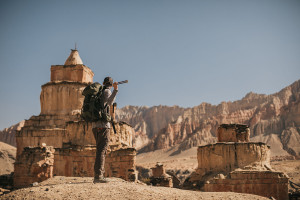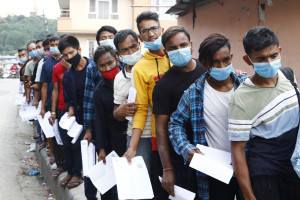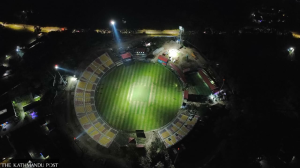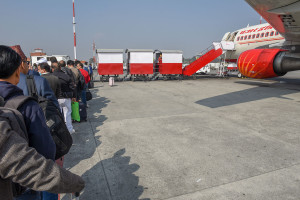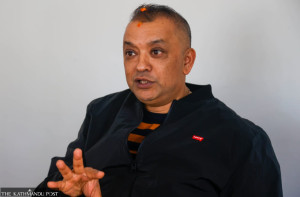Money
Building retrofitting guidelines published
Two years after the Gorkha Earthquake, the Ministry of Urban Development (MoUD) has published a set of guidelines for retrofitting of buildings.
Two years after the Gorkha Earthquake, the Ministry of Urban Development (MoUD) has published a set of guidelines for retrofitting of buildings.
Entitled ‘Seismic Retrofitting Guidelines of Buildings in Nepal’, it contains standard procedures for retrofitting different kinds of buildings.
The manual was unveiled by Urban Development Secretary Dipendra Nath Sharma amid a programme on Sunday.
Property developers will now have to hire consultants or engineers and get their buildings assessed based on the retrofitting guidelines.
Since the government lacks adequate human resources, homeowners have been advised to prepare a report and submit it to Kathmandu Metropolitan City (KMC) or the Division Office, depending on their location, along with a retrofitting plan to obtain the go-ahead to restore buildings affected by the earthquake.
Those planning to build new houses can adopt the guidelines too.
Even though the National Building Code 1994 (105) includes the Seismic Design of Buildings in Nepal, there is no provision for retrofitting, resulting in the procedure and practice of developing earthquake-resistant buildings in the country being haphazard.
Addressing the unveiling, Sharma stressed the need to enhance the capacity of the government and general engineers and technicians so that they can understand the spirit of the guidelines introduced by the government and work accordingly.
“These guidelines are for technocrats,” Sharma said. “Hence, there is a need to simplify it so that all stakeholders can understand it.”
Sharma highlighted the need to provide training to engineers working in municipalities and the concerned government agencies, stating that a majority of them weren’t competent enough to understand the guidelines themselves.
“Implementation of these guidelines is key.
Hence, we should first educate government engineers and then gradually conduct training for construction labourers too to make sure that the guidelines are followed widely,” he said.
According to the ministry, Kathmandu is among the 11 riskiest cities for seismic disasters in the world.
Seismology experts have stated that the country’s Far Western Region and the southern section of the Kathmandu Valley are in the gravest danger of earthquakes, and it is advisable to retrofit buildings that were not harmed by the Gorkha Earthquake. “Just because a building did not fall down or sustain even minor impact in the recent earthquake does not mean that it is safe. Timely precaution needs to be taken,” Sharma said.
The MoUD has stated that three types of buildings—owner built (without taking consideration of technical aspects), well engineered buildings (that have defied certain aspects of design) and buildings lacking period maintenance—were most severely impacted by the Gorkha Earthquake.
Sophie Kemkhadze, deputy country director of the United Nations Development Programme (UNDP) which helped the ministry to prepare the guidelines, stated that it was an important step towards erecting safe buildings in Nepal and that the agency would continue supporting the government in this regard.
The newly launched manual contains different retrofitting measures for adobe, masonry and reinforced cement concrete (RCC) structures.
According to the ministry, the 2015 Gorkha Earthquake claimed 8,790 lives while over 23,300 were injured.
More than 500,000 residential buildings and 2,656 office buildings were completely destroyed, and almost 200,000 residential buildings and 3,622 office buildings were partially damaged.




 19.12°C Kathmandu
19.12°C Kathmandu





